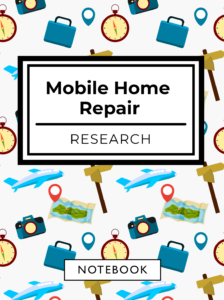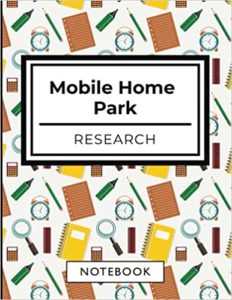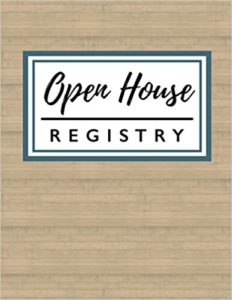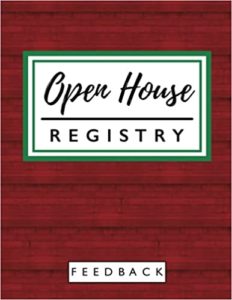Investing 101: Surviving a Natural Disaster

Hi Everyone!
Sorry, it’s been awhile since I last posted (like the end of last year!). It’s been crazy busy…to say the least. 🙁
If you’re subscribed to my weekly newsletter, you’ll know I’ve been working around the clock. Been fixing up homes like crazy. Unfortunately, I had a flood in my area…twice. It was completely unexpected. It had not flooded like this for over 15 years. But it happened…and I’m getting through it, slowly but surely.
(Note: If you need any tips about fixing up homes and/or hiring contractors, I’ve written extensively on the subject here. Thanks for reading!)
The good thing is that I didn’t have all of my inventory in one park. Seriously. Now, that would have been a major catastrophe!
(Note: Though I have known other successful investors to do mobile home deals in only one or two parks, these folks have been lucky. As a general rule of thumb, you just don’t want to have all your eggs in one basket. Imagine if I had my entire inventory of mobile homes in one park? It would have been devastating!)

The flood was so bad FEMA was called in. And the event was officially deemed a natural disaster.
(Note: Guess nothing says experienced real estate investor like going through an official natural disaster, eh?)
Unfortunately, not everyone could afford to fix up their home. Some continued to live in their home…even with the damage. They simply had no place to go.
Others abandoned their homes seeking to live elsewhere. Folks who were lucky had the funds to make repairs. Yet many others sold their homes for pennies on the dollar…to investors and families who moved them out of the park. And then there were the investors who bought homes in the park who simply kept them there…renting them out but doing minimal repairs (aka slumlords).
Due to the flood, this Class A park soon became a Class B park. It went from a highly occupied park to one with only 50% occupancy.
Many of the good residents left while new ones came in (via investors) and were less qualified. How did this happen?
The kicker was when the property manager dropped the bomb on me: the current owners (a mom and pop) didn’t have the funds to fix up the park and sold the park to a large investor group. Oh crap…here we go!
(Note: Now I know what you’re thinking. This can be a good thing. That’s what I thought too. But guess what? Nothing got better. It only got worse. Now you know where the term slumlord comes into play when people hear the word “investor.”)
What’s worse is that the new company fired the existing park manager. I don’t know exactly why but the manager was pretty upset. On the bright side, the new manager was very experienced and cool when I got to know them. So what was the problem?
Well, it turns out this investor group just didn’t have the money to fix up the park. The new manager told me they expected it to look like Sun Communities but just didn’t have the resources and funds to make it happen.
(Note: In all honesty, I think this investor group was either going to flip the park or wait for more investors to put money into the project.)
Plus, the company was overworking this manager as they were managing another park. In the end, this manager quit. Unhappy employees equals an unsuccessful business…no matter what the industry.
As for myself, I had to sell a couple of units that needed more work than I could handle. And take a loss. I still had a great return on my money. The residents in all of my units evacuated the homes and found new living accommodations elsewhere.
(Note: When screening prospective residents, I’ve learned it’s best to work with folks who are low maintenance. This is one of the keys to my success. I talk more about screening tactics here. Thanks for reading!)
So now, I’m stuck trying to fix up and fill homes in a park that flooded. What’s worse is that it looks like a ghost town. And it’s gone from a Class A to a Class B community. What’s saved me is not having all of my inventory in one park.
At the moment, I’m having a hard time filling my units that have already been fixed up. Since I work with people who are local to the area, word has spread about the park and the flood. In short, it now has a bad rap. I’ve been getting interested prospects but the quality of applicants has just gone down.
I’m not quite sure what the future looks like for this park. So, I’m keeping my activity there at a minimum.
On the other hand, my homes in another area in larger corporate owned parks are doing great. These parks have and always been Class A parks owned and managed by large corporations. And guess what? It’s business as usual.
(Note: For anyone interested, I talk more about working in larger versus smaller parks here. Learning to adapt to change is a constant in this business!)
So now my strategy is to go back and do more deals in the larger, corporate owned parks. I can continue to maintain relationships in the smaller, mom and pop type parks.
But I do have to remember, they are very susceptible to being bought out by these investor groups which may or may not be a good thing. Again, it depends on who is doing the buying, their resources and amount of capital on reserve to make improvements. Good investors make communities better. Bad investors destroy them.
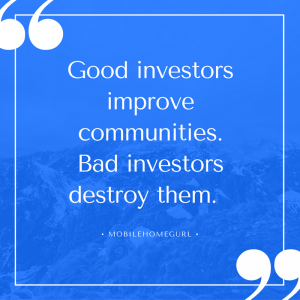
So with all this drama and turn of events, it’s really made me think. Doing deals in parks has worked and continues to work. Though, not owning the land the homes sit on can be an issue when it comes to control.
Without being a park owner, I have no control of the types of people and the way the park will look and operate in the future. Sure, corporate owned parks are more stable. But how about other parks? How long will it last?
Being in the business for awhile, I know things will never be status quo…forever. Change will come. It’s just a matter of time.
Over and over again, I’ve adapted with each new change. And most times, these changes are out of my control.
With that being said, I’ve decided to continue doing what I do but to also be on the lookout for some land. Having a piece of land with my own mobiles on them will give me ultimate control.
One of my mentors has done it…and it’s worked. I’ve known others to do the same thing. And the best part? They don’t get bothered by the city which is yet another story in itself!
(Note: I’m sure you’re thinking, why not just buy a mobile home park? I’ve stated over and over again in my newsletter why: there’s just too much visibility. Unless it’s in an area where the city does not bother park owners, in most cases you have to be politically involved in order to fight city issues. And yes, they don’t usually tell you this in some mobile home park training courses.)
So that’s where I’m at now. First I need to get through this and finish fixing up and filling my homes. Then, I’ll start the next chapter of my adventure.
Thanks for coming along for the ride! 🙂
(Note: Since I’ve been pretty busy, my blog posts will be fewer for the next couple of months. Be sure to sign up for my newsletter for the latest updates and musings. Thanks for reading!)
p.s. Just in case you missed it, I got a mention here for the “Top 20 Investing Books for 2016” and “41 Best Real Estate Investing Blogs and Podcasts of 2016.” Check it out, thanks for reading! 🙂








